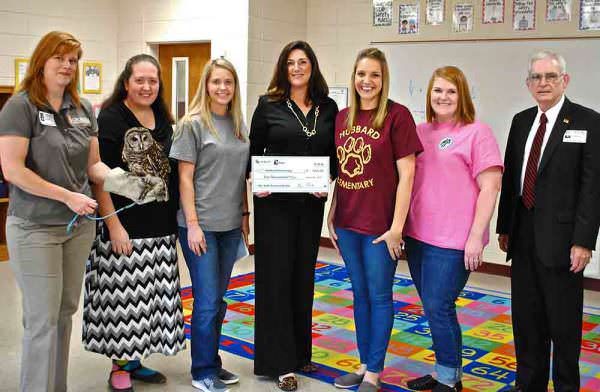

SOCIAL CIRCLE, Ga. –-(Ammoland.com)- A Monroe County teacher’s proposal to create a bog garden out of a regularly flooded area at her school earned a $1,000 grant from the Georgia Department of Natural Resources.
The agency recently announced Tiffany Smith, a third-grade teacher at Samuel E. Hubbard Elementary in Forsyth, as the 2016 Conservation Teacher of the Year grant recipient. The award is given annually to a third- through fifth-grade public or private school teacher in Georgia who demonstrates exceptional energy and innovation in teaching life sciences.
The grant is made possible with funding from The Environmental Resources Network, or TERN, friends group of DNR’s Nongame Conservation Section. The section, part of the agency’s Wildlife Resources Division, conducts the contest and reviews proposals.
Smith was selected for her “Georgia Native Bog Gardens” proposal, which was inspired by her students’ idea to divert water between two school wings into a bog garden that students will create. In addition to solving a condensation problem, the bog garden will serve as an outdoor classroom to learn about native plant and animal interactions while covering several curriculum standards. Through various activities, Smith will help her students hone the 4 C’s of 21st Century Learning: critical thinking, collaboration, creativity and communication.
“When applying for this grant, I thought of the famous words of Benjamin Franklin: ‘Tell me and I forget, teach me and I may remember, involve me and I learn,’” Smith said. “Our Georgia Bog project allows our entire school to be involved by learning life science standards, from kindergarteners learning about the water cycle, to third-graders learning about how the different properties of soil affect an environment, to fifth-graders learning about ways to stop erosion.
“This project is so valuable because it excites our students and energizes our teaching, leaving a lifelong impact on our students’ involvement.”
Additional support for the project will come from parents, local gardeners and the Georgia Farm Bureau. To make sure the bog garden will be maintained and used as a teaching aid in the future, Smith developed a long-term sustainability plan. Her students also will write a guide explaining how to start and maintain a Georgia bog garden, which can serve as a model for other schools.
Linda May, environmental outreach coordinator for the Nongame Conservation Section, said grant administrators received 12 “incredible” project proposals from across the state.
“Choosing a winner was difficult,” May said, “but Samuel E. Hubbard Elementary ultimately came out on top. We love that Mrs. Smith’s project is student-driven. They saw a problem on their school grounds and thought of a creative way to resolve it and to add a new wildlife habitat outside their classroom.”
Previous recipients also fostered an appreciation for the state’s natural heritage and taught students how to contribute to healthy ecosystems through their everyday actions.
Through education, research and management, the Nongame Conservation Section works to safeguard and restore the diversity of nongame wildlife (animals not legally fished for or hunted), rare plants and natural habitats, while also striving to increase public enjoyment of the outdoors. The agency’s work is funded largely by grants, direct donations and fundraisers such as sales and renewals of Georgia’s eagle and hummingbird license plates.
Learn More:
- Conservation Teacher of the Year grant: www.georgiawildlife.com/TeachingConservationGrant
- TERN: https://tern.homestead.com
- Nongame Conservation Section: www.georgiawildlife.com/conservation/AnnualReport
- Conserving Georgia’s nongame wildlife: www.georgiawildlife.com/conservation/Support
